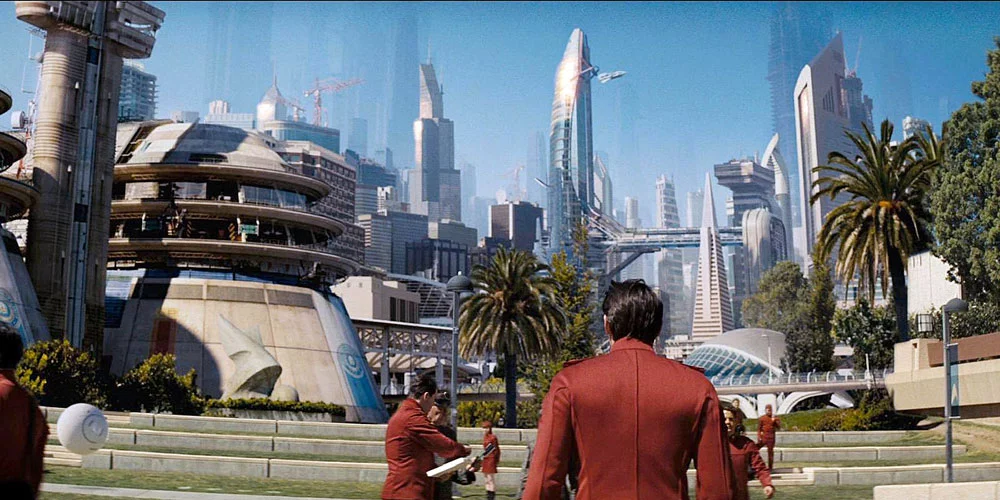
Spin the wheel of science fiction futures and you will almost certainly land somewhere you don’t want to be. A myriad of dystopias and post-apocalyptic landscapes imply that genre authors are a pessimistic bunch, but one outlier comes to mind: Gene Roddenberry. The creator of ‘Star Trek’ imagined an optimistic future in which reason triumphs and we come together as one race regardless of color or creed. Let’s put both pessimism and optimism aside in favor of a realist perspective. Are we heading toward a Roddenberry universe or is it further from our grasp than ever?
The cliché complaint of the future’s promise is how we often fall short. “Where are our jetpacks and flying cars?” we ask. The films of yesterday by and large depict future tech that is, it turns out, way ahead of its time. ‘Back to the Future’’s hoverboards should have been invented last year and we never quite had that space odyssey in 2001. Nevertheless, our actual progress is astounding. We rarely notice as it’s happening, but every once in a while we catch a glimpse before it becomes the new normal.
The launch of the iPhone gave us a unified step toward both the communicator and the tricorder. Wearables such as Fitbits and Android watches are parallels to the communication badges of the Next Generation. There have even been steps made toward Geordi’s visor, be it in a different form. Star Trek’s replicators feel like an evolution of today’s 3-D printers and replicated food may be on the horizon with the growing emphasis on lab-grown meat. Think of the HTC Vive and the Oculus Rift as wearable holodecks. Technology is undebatably heading in the right direction. Moore’s Law is an observation that our computing power doubles every two years and it’s held remarkably. We may not yet be progressing at warp speed, but it certainly seems as though our electronics will reach the ‘Star Trek’ future before the rest of us.
In a world with polarizing politics and Internet trolls, not to mention suicide bombers and tyrannical dictators, it would be easy to say that we have a long way to go before we form the Federation. In fact, I will say it: we have a long way to go, but we’ve also come a long way. When ‘Star Trek’ first aired the idea of so many different ethnicities effortlessly collaborating without a hitch was as far fetched as transporters. Now it’s commonplace to work alongside people unlike yourself. It’s no longer scandalous for a mixed race or, more recently, same sex couple to share an on-screen kiss. There is diversity in leadership both appointed and elected. Stereotypes are commonly viewed as a bad thing and people are largely judged as individuals. Like with tech, we aren’t there yet, but we’re making progress.
It’s never really outlined how humanity moved from what we are today to we become on the show. If we discover alien life it would likely expedite the process. We would think less of fellow humans as an out-group and unite as one large in-group in the face of a new “other.” Even Roddenberry’s vision had the conflict of division. We simply went from identifying as a country to identifying as a planet to identifying as a Federation of Planets. Those not part of the Federation are depicted just as we see those of other earth-bound governments today. Our tribalism never goes away. It just scales.
That’s why I love the ‘Star Trek’ future. Because it is realistic. Aspects seem utopian but our human nature is maintained, for better or worse. When watching ‘Trek’ re-runs at no point do I think, “that’s not us.” It’s only a better version of us. Through science our needs are being met, making the central reason for conflict-the fight for resources-a more marginalized motivation. As long as we can expand the benefits of the modern era to all of humanity though Trek-like compassion and equality, our ancestors won’t be destined to hunt mutated rodentia in a barren wasteland. The future Roddenberry imagined could very well be our final frontier.
